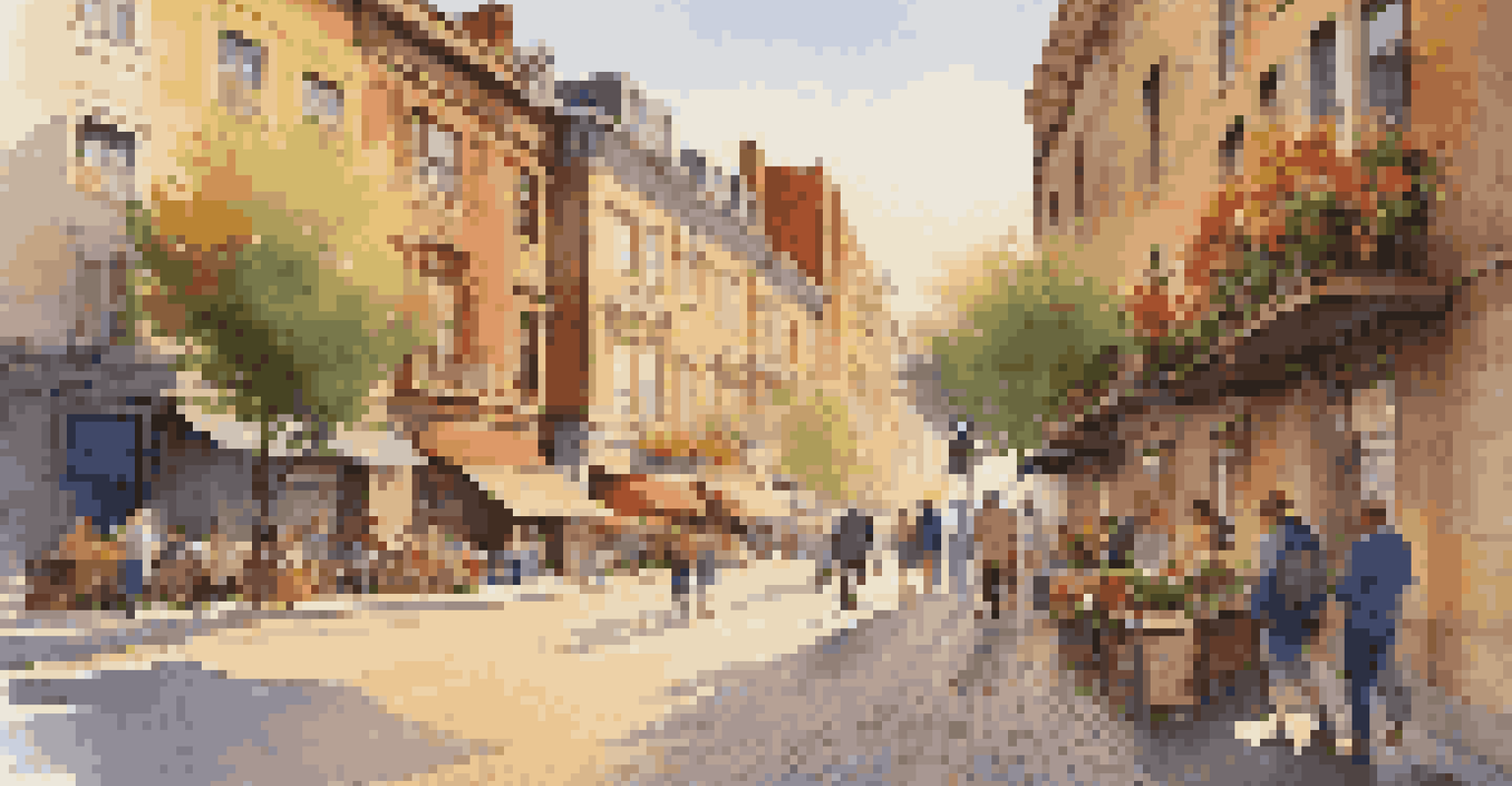Art and Cultural Sensitivity: Ethical Considerations in Creation

Understanding Cultural Sensitivity in Art Creation
Cultural sensitivity is the awareness and respect for the beliefs, practices, and values of different cultures. It plays a crucial role in art creation, as artists often draw inspiration from various cultural backgrounds. When artists engage with cultural elements, they must recognize how their work may impact those communities, ensuring that it’s done respectfully and thoughtfully.
Art is a reflection of the culture in which it is created. It is imperative for artists to approach cultural elements with respect and understanding.
For instance, consider an artist who wishes to incorporate indigenous motifs into their work. Without understanding the significance behind these symbols, they risk trivializing deeply held beliefs. This highlights the importance of doing thorough research and engaging with the culture in question to create a meaningful dialogue rather than a superficial representation.
Ultimately, cultural sensitivity fosters an environment where art can be a bridge between communities rather than a source of contention. By being mindful of cultural contexts, artists can enhance their work's depth and authenticity.
The Ethical Implications of Cultural Appropriation
Cultural appropriation occurs when artists adopt elements from a culture without permission or understanding, often leading to exploitation. This practice can strip cultural symbols of their original meaning, turning them into mere aesthetic choices. The ethical implications are significant, as they can perpetuate stereotypes and reinforce power imbalances, especially when marginalized cultures are involved.

For example, when fashion designers use traditional garments from indigenous cultures in their collections without acknowledgment, it can be seen as commodification. Such actions not only disrespect the cultural significance but also deny the originating culture its agency and recognition. This raises questions about ownership and the responsibilities artists have when borrowing from others.
Cultural Sensitivity in Art
Artists must respect and understand the cultural significance behind the elements they incorporate into their work to avoid trivializing beliefs.
Being aware of these ethical implications allows artists to navigate their creative processes more thoughtfully. Instead of appropriating, they can choose to collaborate or give credit, fostering a more inclusive art community.
The Importance of Research and Dialogue
Research is a vital step in ensuring cultural sensitivity in art creation. Artists should delve into the history, meanings, and nuances of the cultures they wish to engage with. This foundational knowledge not only enriches the artwork but also demonstrates respect towards the culture itself, building a bridge of understanding.
Cultural sensitivity in art is not just about avoiding offense; it's about creating a dialogue that respects and honors the cultures we draw inspiration from.
Moreover, engaging in dialogue with members of the culture can provide invaluable insights. Conversations with cultural representatives can reveal perspectives and stories that might not be accessible through research alone. This collaborative approach can lead to more authentic representations and foster mutual respect.
Ultimately, research and dialogue are not just about gathering information; they are about building relationships. By investing time in understanding the culture, artists can create works that resonate with authenticity and respect.
Navigating Artistic Freedom and Responsibility
Artistic freedom is a fundamental principle that allows creators to express themselves without constraints. However, this freedom comes with the responsibility to consider the impact of their work on others. Striking a balance between these two can be challenging, especially when dealing with sensitive cultural themes.
For instance, an artist might feel compelled to tackle social issues through their work, yet they must also consider how their approach affects the communities represented. An insensitive portrayal can lead to backlash, highlighting the need for artists to be both courageous and conscientious in their creative pursuits.
Ethical Collaboration is Key
Engaging with cultural representatives fosters authentic art creation and builds trust between artists and the communities they draw inspiration from.
In this way, artistic freedom and responsibility can coexist harmoniously. By respecting cultural boundaries while exploring creative expression, artists can contribute positively to societal conversations.
The Role of Collaboration in Ethical Art Creation
Collaboration is a powerful tool for fostering ethical art creation. By partnering with individuals from the culture being represented, artists can create works that are more informed and respectful. This collaborative process not only enriches the artwork but also builds trust and understanding between cultures.
For example, a musician collaborating with traditional musicians from a specific culture can create a fusion that honors both styles while promoting cultural exchange. Such partnerships can break down barriers and encourage a more profound appreciation for diverse artistic expressions. It also allows for a shared narrative that reflects the voices of those involved.
Incorporating collaboration into the creative process reinforces the idea that art is a collective experience. It emphasizes the importance of listening and learning from one another, ultimately leading to more meaningful and ethical creations.
The Impact of Digital Age on Cultural Representation
The digital age has transformed the way artists interact with culture and share their work. Social media platforms provide artists with unprecedented access to diverse cultures and communities. However, this accessibility also comes with challenges, as it can lead to misrepresentation or oversimplification of cultural elements.
For example, when cultural symbols are shared widely online, they can lose their context and significance. This phenomenon can lead to misunderstandings and cultural dilution, as audiences may interpret these symbols in ways that deviate from their original meanings. Artists must navigate these waters carefully to maintain respect for the cultures they engage with.
Digital Age Challenges
While social media offers access to diverse cultures, it also risks misrepresentation, requiring artists to navigate cultural contexts carefully.
Navigating the digital landscape requires a thoughtful approach to cultural representation. Artists can use these platforms not only to share their art but also to educate their audience about the cultures they draw inspiration from, fostering greater awareness and appreciation.
Creating Art that Respects and Celebrates Diversity
Ultimately, the goal of engaging with different cultures in art should be to celebrate and respect diversity. When artists approach their work with a mindset of inclusivity, they can create pieces that resonate with a wide audience. This celebration of diversity enriches the artistic landscape and promotes understanding among different communities.
For instance, art exhibitions that feature works from various cultures can provide platforms for sharing unique stories and perspectives. These exhibitions not only highlight individual artists but also underscore the beauty and complexity of cultural narratives. By fostering an environment of inclusivity, art can serve as a unifying force.

In this way, artists have the opportunity to contribute positively to society. By respecting and celebrating cultural diversity, they can create meaningful art that resonates with people across various backgrounds, promoting empathy and understanding.